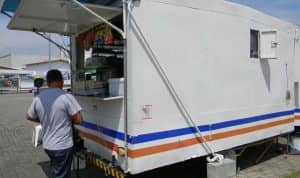Experiential marketing events can be incredibly beneficial additions to your company’s business strategy. This form of marketing can yield many of the same benefits as various other marketing strategies, if not more. However, unlike some other marketing strategies, measuring the success of an experiential marketing campaign is a bit more difficult. Success often looks different between each campaign and event activation, which can make it more difficult to effectively track ROI. This guide for how to measure experiential marketing ROI will help you understand how to measure success for your individual marketing campaign.
Establish goals
The first step in understanding how to measure experiential marketing ROI is to understand the specific goals for your experiential marketing campaign. Experiential marketing campaigns may be established for various reasons and can be used to promote a plethora of products and services. Establishing your goals from the get-go will help set the course for your entire marketing campaign and will ensure that all decisions contribute to that one central goal.
Setting a concrete goal for your campaign will also help you establish the best means for measuring the campaign’s overall success. Perhaps you hope to increase overall sales for your company, build a broader audience base, or further solidify existing customer loyalty. However you choose to define success, outline your goals well in advance of the campaign or event. You can’t measure success if you don’t know what success looks like, after all.
Choose KPIs
Once you’ve established your overarching goals for the campaign, it’s time to choose the measurement tools that will best enable you to achieve these goals. Choosing the best KPI, or key performance indicator, for your campaign can be difficult, especially since there are so many different metrics through which you can measure success.
The KPI that you choose for your marketing campaign should directly correlate to the campaign’s overarching goal. If, for instance, you hope to broaden your audience base, you may choose KPIs that measure the number of new consumers who attend your event installation. Other KPIs may seek to measure consumer awareness and familiarity regarding your company, the likelihood of consumers to purchase your company’s products, or the impact that the experience has on the consumer’s perception of your company.
Track engagement
With your goals and KPIs firmly in place, it’s time to begin the dirty work of actually tracking and analyzing consumer engagement. Start by collecting contact info from event attendees. This may seem a bit dry, but collecting demographic information from participants, including age, gender, and background, will help give you understand your audience. You can also conduct a survey with participants to gauge brand sentiment. Tracking social media posts is also a great way to gauge consumer engagement. Outfit your pop-up display or custom marketing container with digital elements and a unique hashtag. Then, track this hashtag’s use across all forms of social media to better analyze your company’s reach across the digital sphere.




